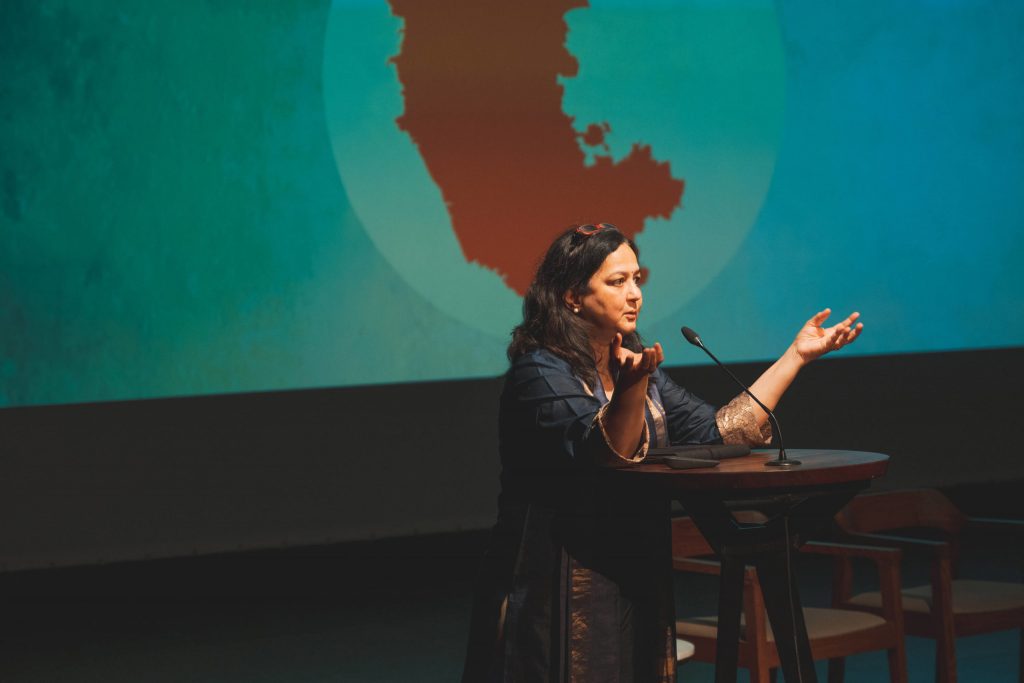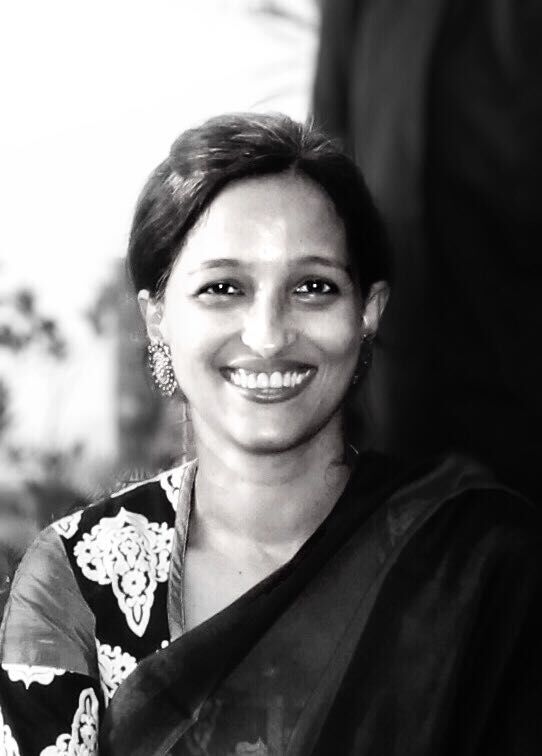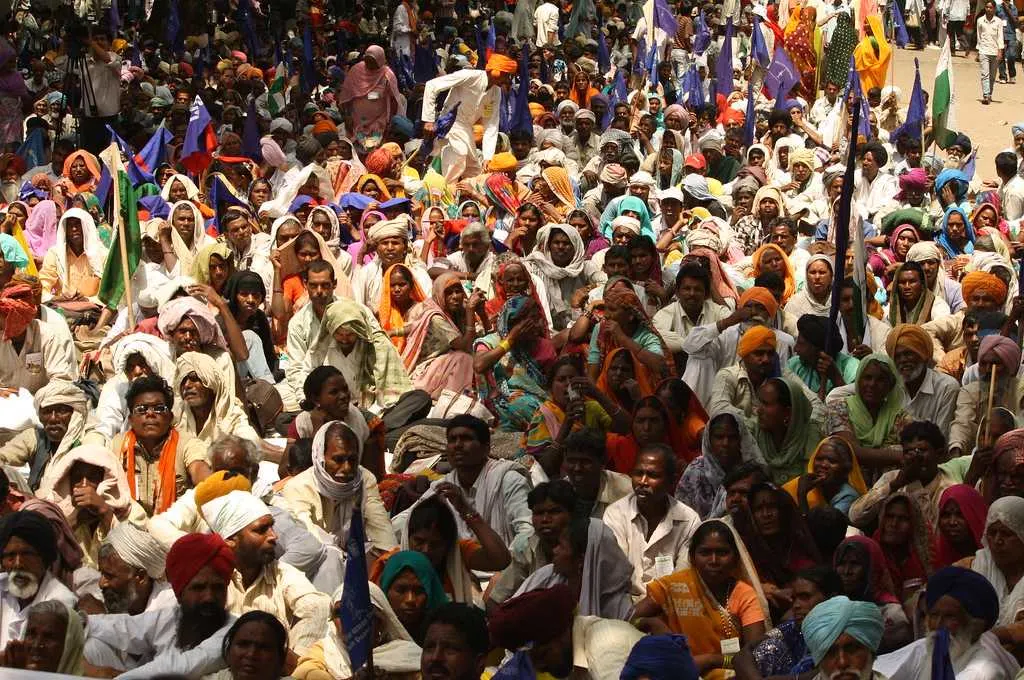Rohini Nilekani is Founder-Chairperson, Arghyam, a foundation for sustainable water and sanitation which funds initiatives across India. From 2004 to 2014, she was also the Founder-Chairperson and chief funder of Pratham Books, a nonprofit children’s publisher.
A committed philanthropist, Rohini sits on the board of trustees of ATREE, an environmental think tank, and is a director on the board of EkStep, a nonprofit education platform. A former journalist, Rohini has written for leading publications such as India Today and Times of India.
In this interview with IDR, Rohini speaks about why we need to underwrite failure in the social sector, how philanthropists can support failure in practice, and shares some of her own failures as an activist philanthropist.

When working on complex issues of social change, failure is inevitable. Yet, people in the social sector are reluctant to talk about it. Why do you think this is the case?
When I think about failure, I think about the different ways in which it is perceived across samaaj (civil society), sarkaar (state), and bazaar (markets). In bazaar failure is underwritten structurally by financial markets. You’re allowed to go there and try something really crazy. And if you fail—not that anybody chooses to fail—there is a safety net for you. That’s why bazaar can afford to glorify failure a little bit, and say ‘fail forward’ or ‘fail fast’.
Sarkaar, on the other hand, is not incentivised or structured in a way that invites failure. That’s why they will prefer to see a proven model that they can take to scale, rather than try to innovate, because innovation involves a lot of failures. And this is alright because the government’s goal is not to provide risk capital to society, but rather to provide equity and service delivery.
Coming to samaaj, there is a greater risk appetite to try out things to help society, but there is less underwriting of the risk of failure. And this needs to change, because we are talking about people and their lives; we’re talking about their emotional, financial, and social well-being. So, in this context, it is important for social sector organisations to talk about failure, recognise it early on, and course correct. To do this effectively, we need patient philanthropic capital that will allow organisations and missions to experience some failures, some learning, and some experimentation, to find what works.
You make a very important point about philanthropy providing risk capital and staying the course. What does this look like in practice?
The way I see it, there are three main things that can create an enabling environment: trust, patient capital, and allowing the conversation on failure and innovation to be upfront and transparent. For me, it all begins with trust. The relationship between the philanthropist and nonprofit partner has to be built on trust, so that the nonprofit feels accepted when they are trying to do something different. Because if they’re not trying to do something different, how are things going to change? And some of these experiments will fail, either because the demand for those services or the institutional structures that support them are not ripe enough. Philanthropy needs to create space for these failures to be talked about and explained, and then allow more experimentation.
Once a funder trusts an organisation, they need to think about committing to multi-year funding.
We also need to be very conscious of timeframes, when talking about failure. Take the education sector in India, for example. About 25 years ago, parents were not very committed to putting their children through 14 years of schooling. Dropout rates were high and the number of out-of-school children was large. But thanks to the work of nonprofits, government policies, and markets, the understanding that education might lead to a better life for their children began to grow, and the demand for education built up rapidly. Today the idea of education being necessary has been completely internalised in India. Though it took some time, what might have initially seemed like a failure to the nonprofits and philanthropists working in the space, (the number of children with no access to education), today looks like a lot of success.
Once a funder trusts an organisation, they need to think about committing to multi-year funding so that the nonprofit is not spending 30 to 40 percent of their organisational bandwidth trying to raise funds, instead of trying to innovate on the ground.
In spite of a growing recognition among philanthropists that the programmes they support might not work, nonprofit grantees might still be hesitant to talk about their failures in fear of losing funding. How do we address this?
I think the social sector putting forward more stories and examples of short-term failures that allowed them to innovate and succeed in the long-run will build an understanding and make philanthropists more open to having a longer timeframe with their grants. In doing this however, both the philanthropist and the organisation need to make sure that failure is not glorified. We are not trying to achieve failure; we are going to fail because it’s not always possible to succeed, and it’s important to accept that.
While doing this we also have to be careful to distinguish between the failure of the organisation and the failure of some individuals within the organisation. There is a different way of responding to failure of some individuals—perhaps from a moral lapse—than a failure coming out of a good intent to innovate. The analysis of the failure and its origins is extremely important. Creating the space to do this—first internally by the organisation and then a little more openly—should become a structured process. I’m sure many organisations do this already, but it would be helpful if we could come together to create frameworks, toolkits, and processes, which are easy for organisations to follow and share publicly.

Beyond acknowledging and analysing failure internally within organisations, what can we do to ensure that others can also learn from failures, even if not their own?
This is a very important point because the goal of the social sector should be to ensure that even if organisations, institutions, or leaders fail, their mission shouldn’t fall by the wayside. We need to keep space for others to continue the task—the societal task—even if some organisations fail. One way I see of doing this is by converting the effort and knowledge of organisations into digital public goods; using open source technologies that allow people to come in and share, discover, and learn. In a sense, this is a de-risking from the failures of individual leaders, organisations, and innovations—sharing knowledge so that we don’t make the same mistakes again.
We are not trying to achieve failure; we are going to fail because it’s not always possible to succeed, and it’s important to accept that.
But beyond just individual organisations or philanthropists, how can we learn from the failures of the social sector as a whole? To me, what would be interesting would be if we had a process to look at the failures of the social sector in India over the last 40-50 years. Because by now, it should have been in a less risky space. Could we have done something differently, together?
We are now seeing a new wave of young social sector actors using technology and other new methods to increase equity and access. What can they learn from the old wave of social sector players, who worked from the 1970s to the 2000s? What were their failures? What can we learn from them and do differently?
Can you tell us about some of your failures, and what you’ve learned?
In my professional life, I’ve experienced many failures, some worse than others. But my very first failure in my professional life as an activist philanthropist was way back in 1992, when I set up an organisation called Nagrik, after one of my very close friends died in a horrible road accident. Along with a few others, we laid out our goal to create safer roads.
We worked on it for a few years without a large budget, but I don’t think the budget was the problem. I think the problem was that we didn’t quite know how to go about it. There was a lot of enthusiasm, passion, and intelligence in the group, but I think we didn’t structure ourselves. And so, the whole initiative faded away; but the problem didn’t go away at all. India continues to have the highest number of road accidents and deaths in the world, with 150,000 annual deaths.
When I think about my own failures, I also go back to the fact that what looks like a failure today may look like success tomorrow.
It was a failure at many levels and I take a lot of the blame for the lack of strategic thinking on myself. But it taught me a few lessons about how not to do things, how to think through things, how to set realistic goals, and how to ensure that you have a professional cadre working with you—not just enthusiastic, good Samaritans.
And when I think about my own failures, I also go back to the fact that what looks like a failure today may look like success tomorrow. We cannot predict when this will happen, and especially as philanthropists, we need to be aware of this. It’s been nearly 15 years since Arghyam, the nonprofit organisation I set up and fund, started working on supporting sustainable water and sanitation solutions. Somebody could look at us and say that the water situation in India has actually gotten worse in this time. Is this a failure of the organisation and the vision? I think we could say that Arghyam could have been much more impactful. But one could also say that the water problem in India is so huge and so complex that it is completely unrealistic to expect one organisation to do anything more than shift the needle in some aspects of the water situation. And we have been able to do that. We have been able to make the issue of groundwater more visible among practitioners, donors, and policy circles. Some of the policies that our partners have been able to embed in government frameworks will hopefully create more sustainability and equity in the water sector, sooner rather than later. To a certain extent, we succeeded in nudging, catalysing, and innovating. But of course, if you look at the whole water sector, then Arghyam has by no means finished its journey towards its mission.







